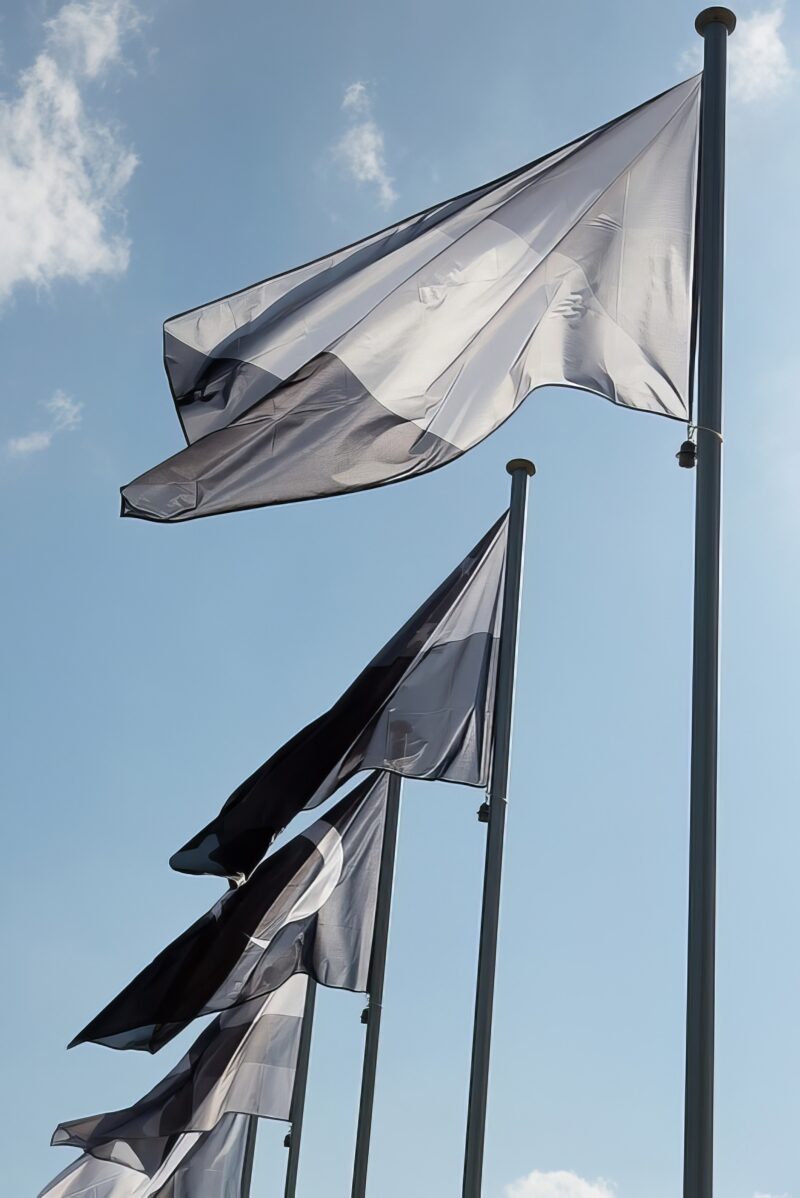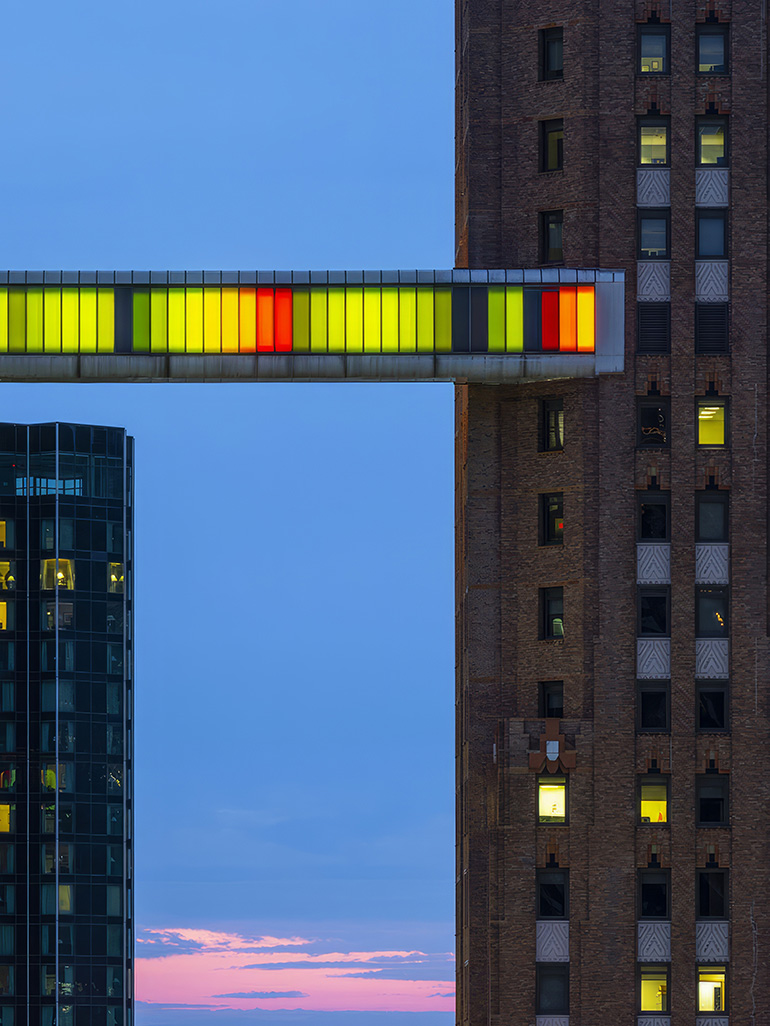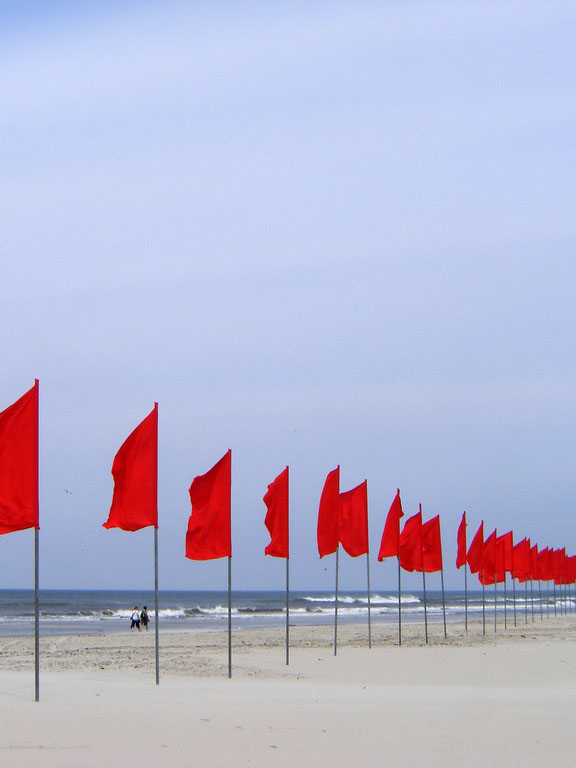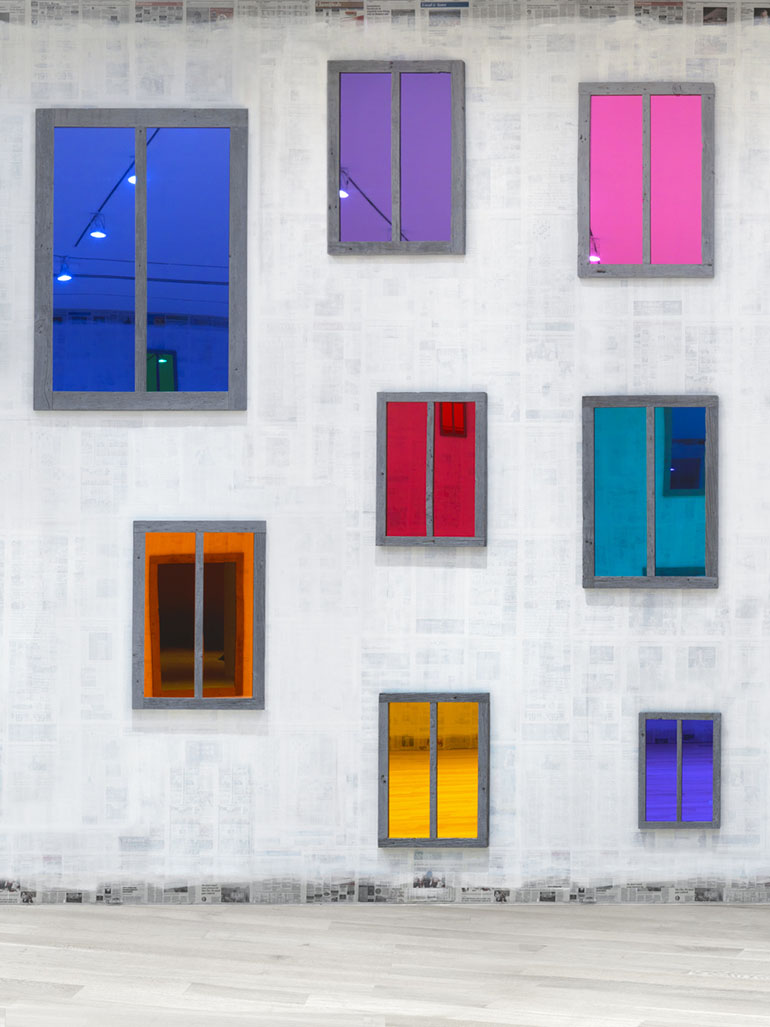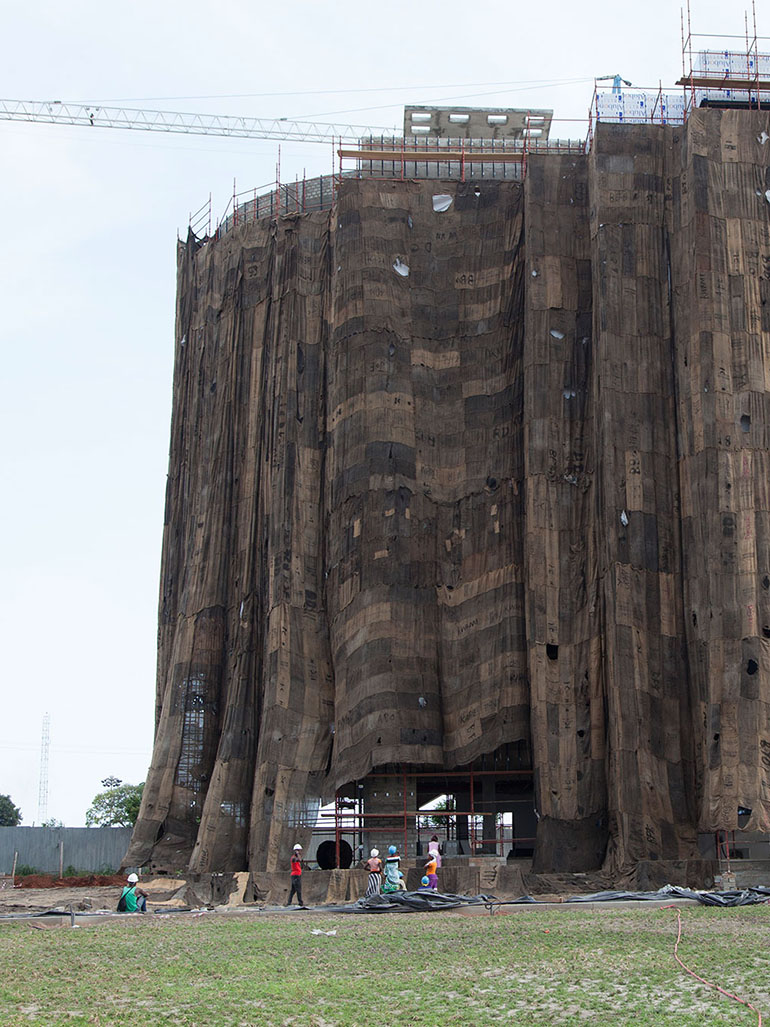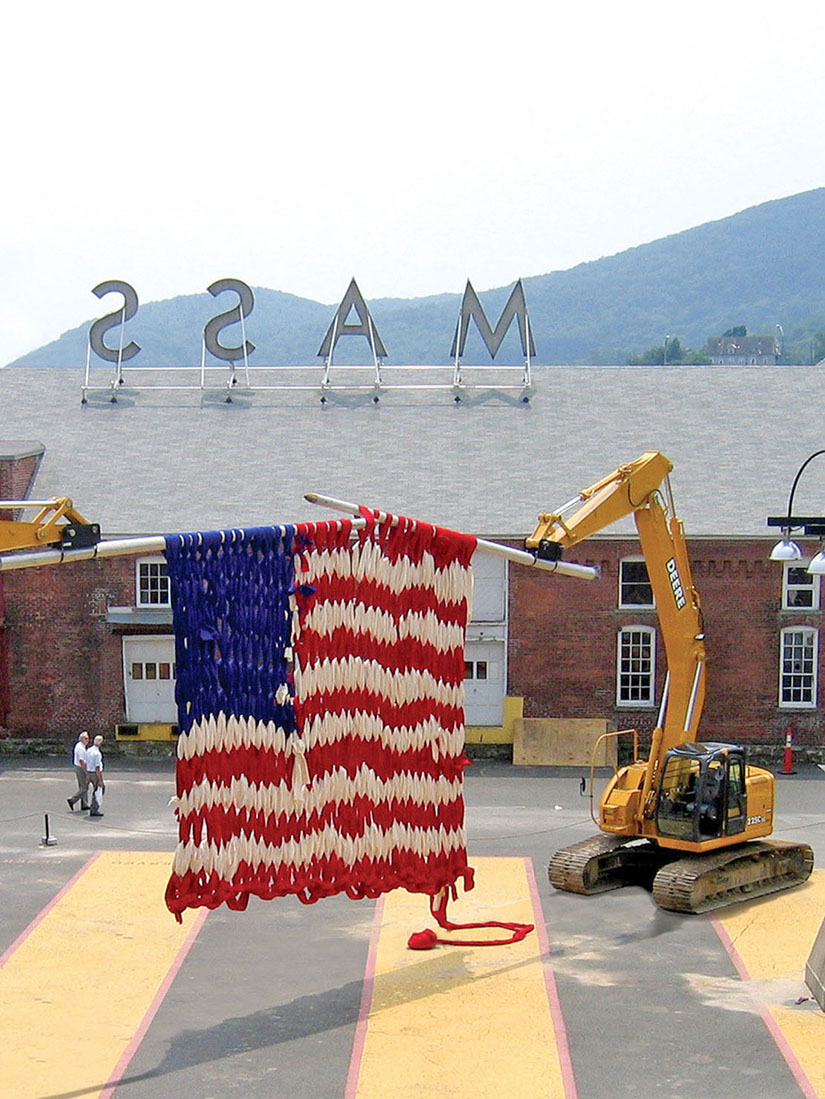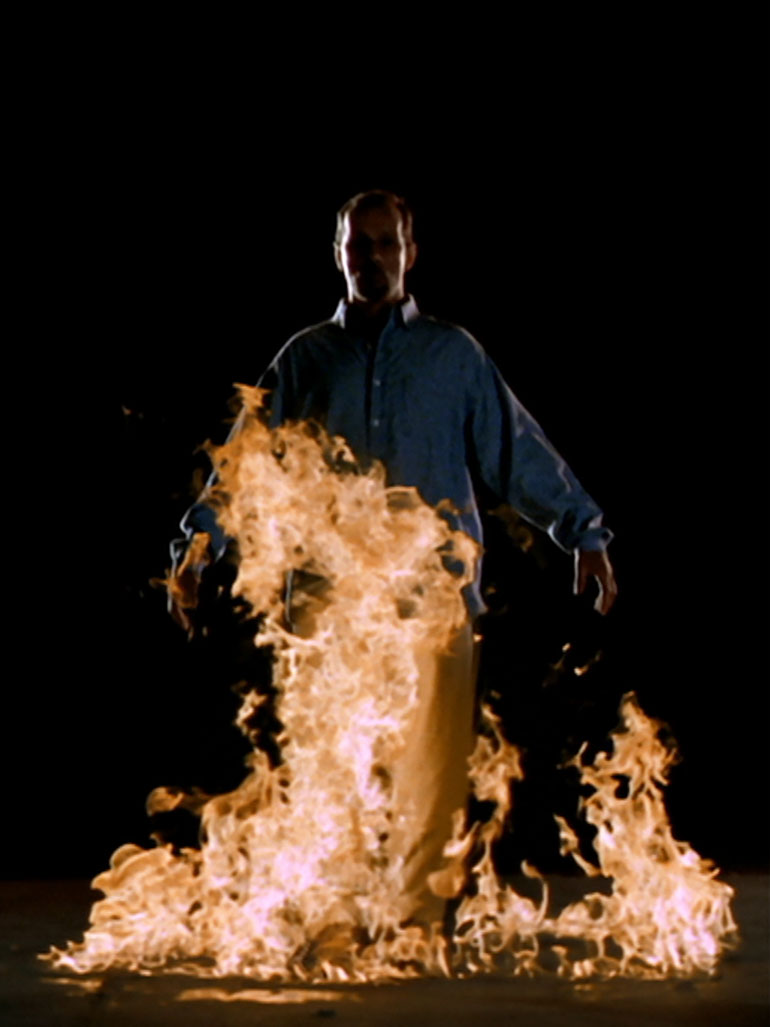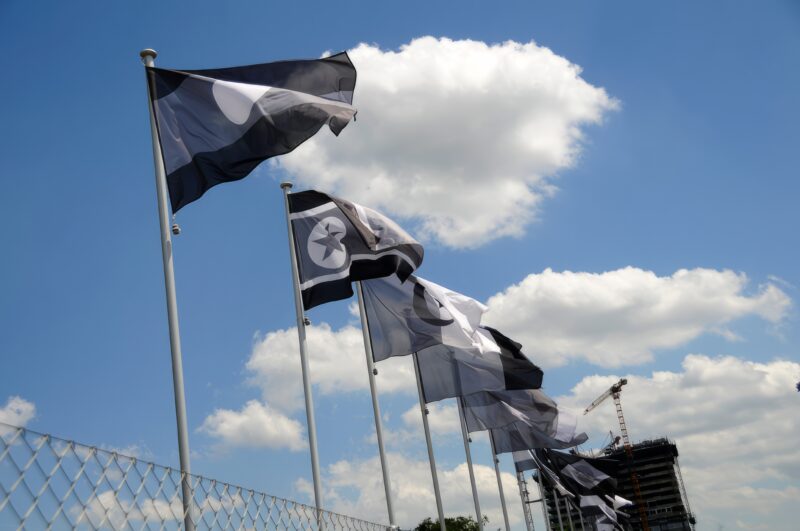
What was Apolítico?
Apolítico, created in 2001 by Cuban 1 artist Wilfredo Prieto 2 (1978), was a collection of 45 flags from different countries around the world. Prieto chose the countries based on the fact they were all recognized by the United Nations. In an interesting twist, the artist stripped the color from the flags and kept the abstract and egalitarian versions.

In 2006, when the Kadist Art Foundation opened its doors to the public, the arts organization showcased Apolítico, which by then had 60 national flags. In 2012, Prieto showed Apolítico in Zürich 3, Switzerland 4, on the occasion of Art and the City 5, the largest outdoor exhibition in Switzerland, at the Hardturm Stadium, which had in the past been a venue for international soccer matches.

Interpretation of the artwork
To better understand Apolítico, it is important to appreciate the artist’s creative style. Prieto is known to modify items such as fans, plastic cups and plants that are in view all the time. Although he is careful not to interfere with the form and context, those who are familiar with his work understand the criticism he attempts to portray.

By modifying everyday items, the artist paints a picture of a new identity which leads his audience to think about the various possibilities of life. It makes sense that every country should have its national identity and the flag is the best illustration of this. Stripping of the color is, therefore, quite significant because it causes oneness in diversity.
Prieto makes sure that the interventions he makes on ordinary objects are minimal so that they remain almost invisible. According to the artist, the essential element of his projects is the connection that exists between reality and art. He considers his work as a platform of exploration – sort of like an archeologist who magnifies nuances that are present in real life.
Art is any human activity, that contains an idea other than its utilitarian purpose …
Inspiration behind the artwork
Growing up, Prieto admired the artistic style of Marcel Duchamp 8, who was a conceptual artist 9. This did not, however, incline him to create similar art pieces. He has so far succeeded in distancing himself from the many traditional art-making techniques that are used by many artists. Instead, Prieto deliberately keeps off cultural and political considerations that would block his creative energy.
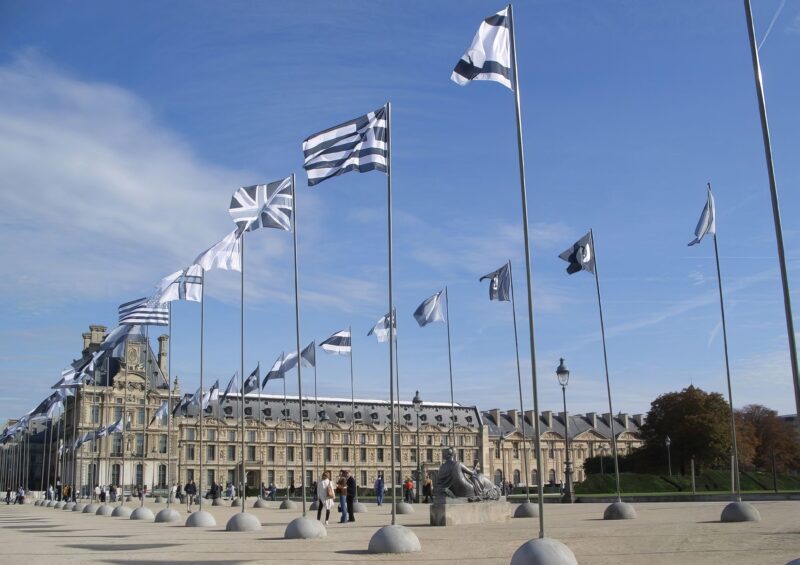
In an effort to remain free of any art influence, Prieto frequently changes his mediums depending on the concept or idea that is in front of him. To maintain autonomy from his art, the artist never gets attached to the projects he is working on. In most cases, he eliminates an obvious component in an object that his followers easily figure out.
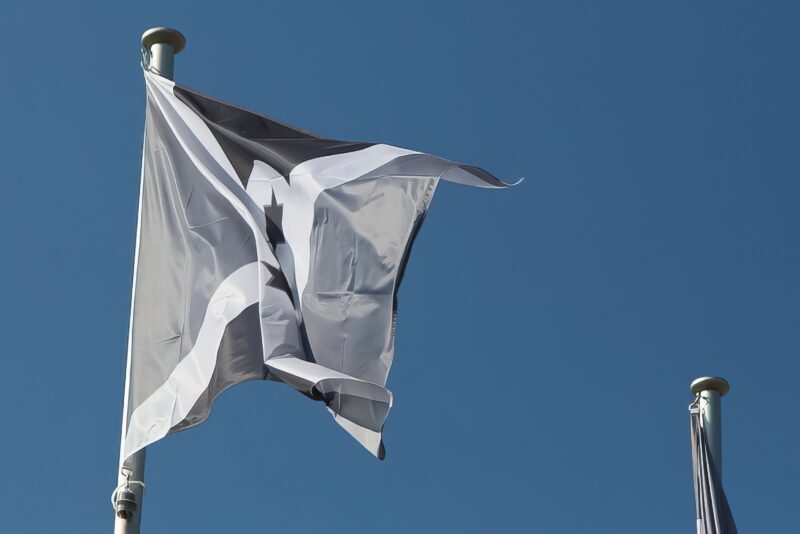
In an interview 10, Prieto said this about Apolítico11:
It was a piece that somehow or other wanted to speak of international mourning. A way of homogenizing ideology and nationalisms, of disrupting the ways of seeing that we have by default. The territorial question also came into play, the question of political and geographical consensus, thinking about creating a vision that was much more global than the national kind.
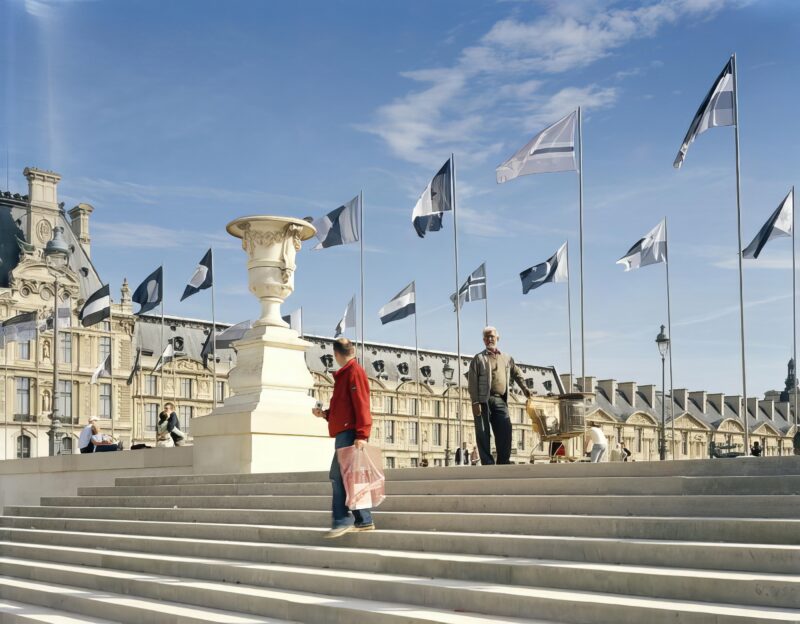
Conclusion
Apolítico has been exhibited in France, Italy and Switzerland with the same effect everywhere. What would the world be like without the consideration of color? The answer lies in the appearance of the grayscale flags as created by Prieto. Since all the countries whose flags appear on the Apolítico are affiliated with the UN, Prieto demonstrates that there is indeed no color when a group of people works towards the same objectives.
